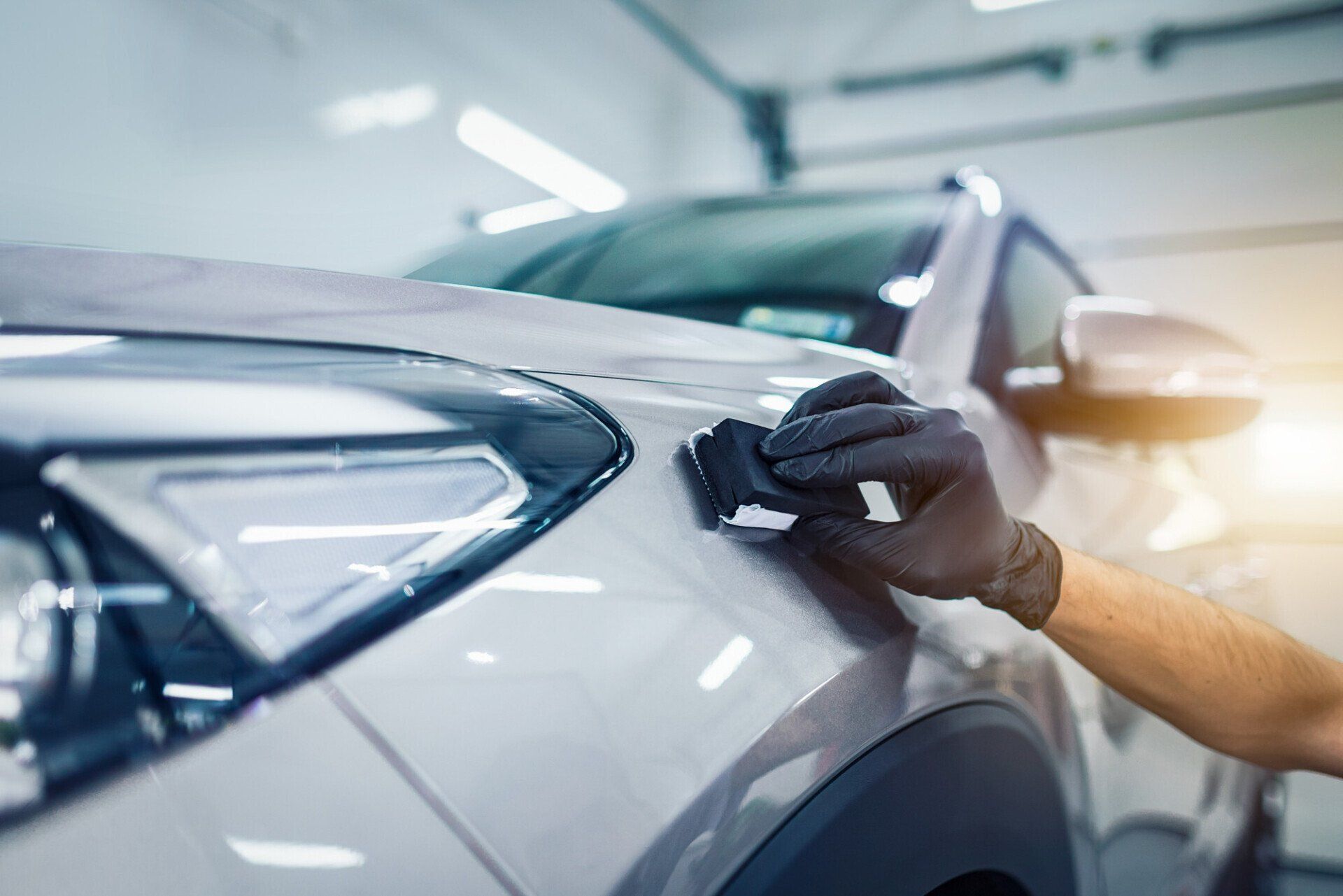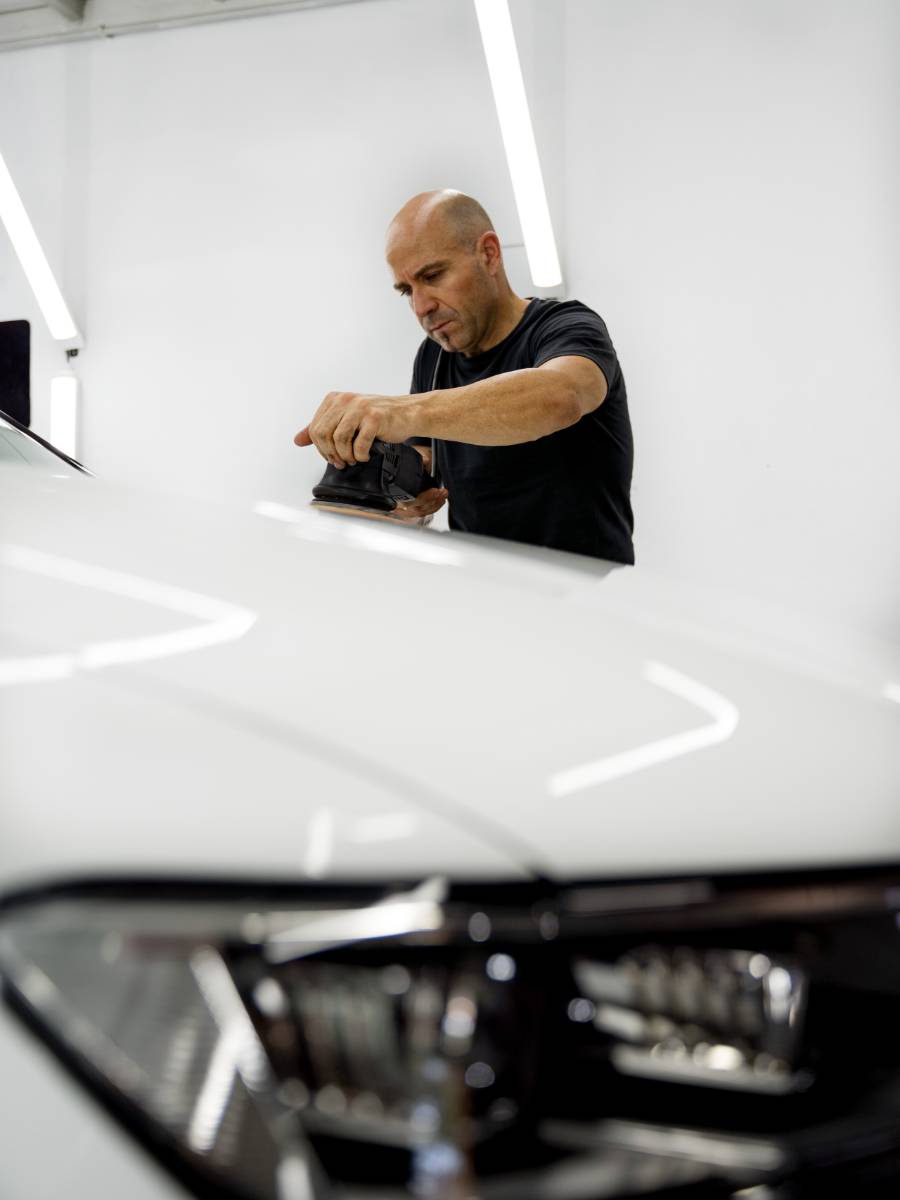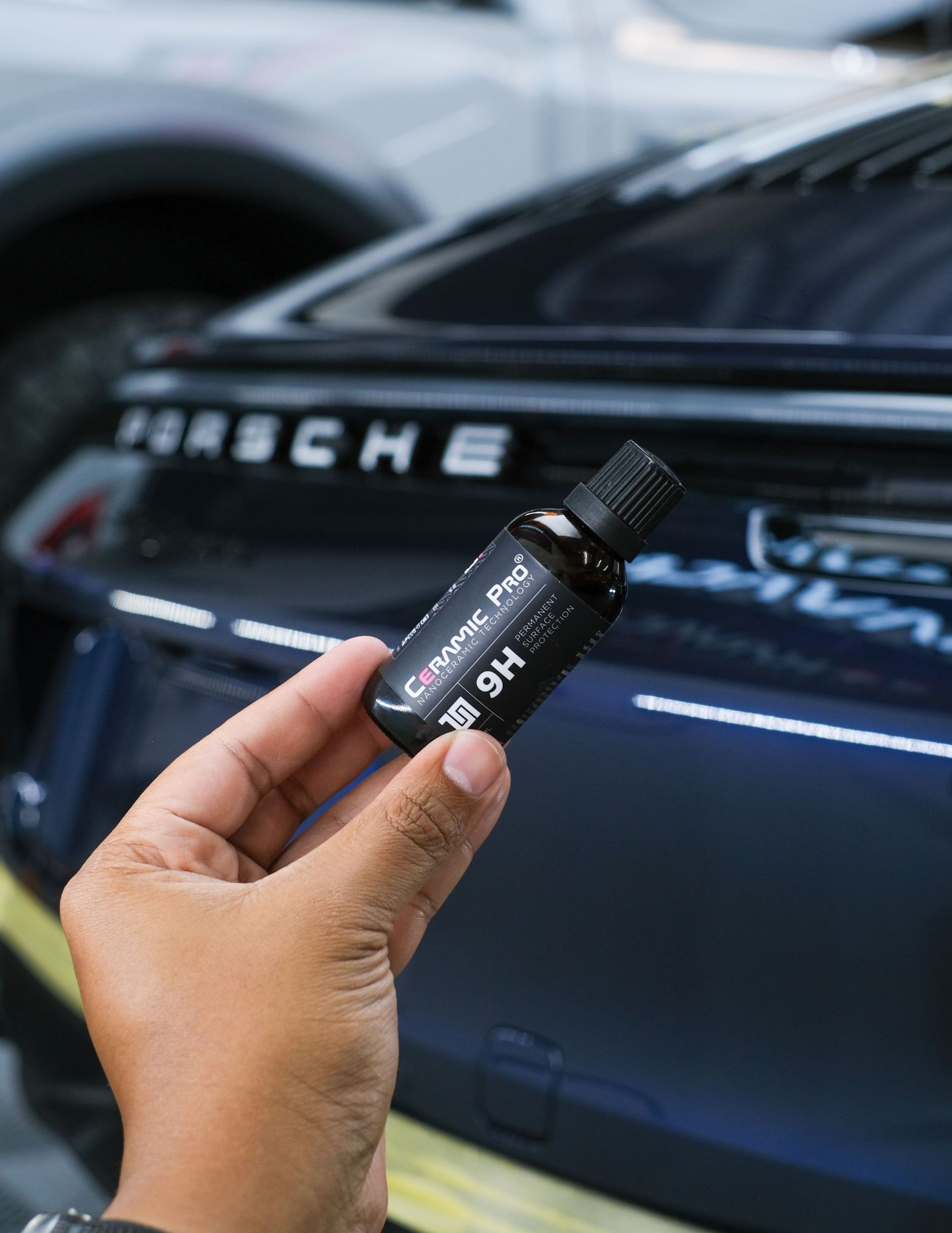How Ceramic Coating Enhances Your Vehicle's Protection and Appearance
Wiki Article
Ceramic Covering vs. Typical Wax: Which Supplies Better Long-Term Protection?
The argument in between ceramic layers and typical wax for vehicle protection has actually gathered significant attention amongst auto lovers and experts alike. Ceramic coverings boast premium long life and resistance to environmental factors, yet the intricacy of their application increases questions concerning availability and functionality.Review of Ceramic Coating
Ceramic finishing has actually acquired substantial popularity among vehicle enthusiasts and detailers alike due to its advanced safety high qualities. This cutting-edge innovation is developed to develop a resilient, hydrophobic guard over a car's paint surface area, substantially enhancing its resistance to ecological impurities such as dust, UV rays, and chemical discolorations. Unlike standard wax, which provides a temporary layer of protection, ceramic coatings bond at a molecular degree with the paint, using long-lasting toughness-- frequently prolonging beyond 2 years with proper upkeep.The application procedure includes precise prep work of the vehicle's surface, including cleaning and polishing to make sure ideal adhesion. Once applied, the layer treatments to create a robust layer that not only adds deepness and gloss to the paint however likewise streamlines maintenance. With its hydrophobic residential properties, ceramic finish enables water and dirt to slide off more easily, minimizing the regularity of washes and reducing the risk of swirl marks.
Additionally, ceramic coverings are available in numerous formulations, enabling individuals to select items customized to their certain needs and choices. Generally, ceramic covering stands for a considerable innovation in paint defense technology, providing superior efficiency contrasted to conventional options.
Overview of Traditional Wax
Traditionally considered a staple in automobile care, wax functions as a preferred option for those looking for a simple approach to boost and protect their vehicle's paint - ceramic coating. Automotive wax typically comprises all-natural active ingredients, such as carnauba, or artificial substances, designed to create a protective layer on the surface of the paint. This layer not only enhances the lorry's gloss and beam but likewise supplies an obstacle against environmental pollutantsThe application of wax is usually straightforward, making it accessible for both professionals and do it yourself enthusiasts. It can be applied by hand or machine, enabling adaptability in the describing process. As soon as used, wax needs a curing duration, after which it hardens to develop a protective covering. Wax is likewise known for its ability to drive away water, promoting a beading result that aids in the prevention of water places and corrosion.
However, while wax is reliable for enhancing the aesthetic charm of a lorry, it is very important to note that the defense it supplies might require extra constant reapplication compared to alternative items, such as ceramic finishes. On the whole, conventional wax remains a preferred choice for those focusing on simplicity of usage and immediate aesthetic improvement.
Longevity and Longevity Comparison
While both ceramic layers and traditional wax deal safety advantages for vehicle paint, their durability and durability vary substantially. Conventional wax, commonly made from all-natural carnauba or artificial polymers, generally offers a protective layer that lasts around three to six months. This relatively brief life expectancy demands regular reapplication to keep ideal protection.In contrast, ceramic finishings are crafted from advanced nanotechnology, creating a covalent bond with the paint surface area. This leads to a durable, hydrophobic layer that can endure for two to 5 years, depending upon the item and ecological conditions. The exceptional durability of ceramic layers is connected to their chemical framework, which provides boosted resistance to scrapes, UV rays, and oxidation.

Security Against Ecological Aspects
Protecting a lorry's paint from environmental aspects is essential for maintaining its look and value in time. Vehicles are continuously revealed to a selection of elements, including UV rays, bird droppings, tree sap, acid rain, and roadway gunk, all of which can jeopardize the stability of the paintwork.Ceramic finishes supply a durable defense against these environmental assailants. Unlike standard wax, which can weaken promptly under UV exposure, ceramic finishings form a sturdy, hydrophobic layer that withstands the harmful impacts see this here of sunshine and ecological pollutants. This sophisticated modern technology creates a chemical bond with the car's surface, supplying exceptional security that lasts for many years, also in rough conditions.
Standard wax, while less complicated to use, typically requires constant reapplication and supplies limited resistance to contaminants and UV rays. Gradually, it can damage down, leaving the paint at risk to scrapes and oxidation. In contrast, ceramic finishes keep their protective qualities longer, considerably decreasing the danger of paint damage and making sure that the automobile keeps its visual charm. Therefore, ceramic finishings are progressively recognized as the remarkable option for long-lasting protection against environmental factors.
Application and Maintenance Distinctions
The approaches of click for more application and succeeding read review maintenance for ceramic finishes and traditional wax vary significantly, impacting the total individual experience and performance of each product. Ceramic finishes require an even more detailed application process, normally including surface preparation that includes cleaning, decontaminating, and brightening the automobile. As soon as the surface area is prepared, the ceramic covering is used in a controlled environment, commonly requiring professional know-how to guarantee correct curing and bonding to the paint.

While both items enhance vehicle appearance, the longer-lasting protection supplied by ceramic coatings may justify their initial financial investment, despite the more demanding application process. Conversely, typical wax stays a popular choice for those seeking a simpler, albeit temporary, service.

Verdict
In verdict, ceramic coatings demonstrate significant advantages over conventional wax in terms of sturdiness and environmental management. With a life expectancy expanding 2 to 5 years and remarkable resistance to UV rays, dust, and chemical spots, ceramic finishes supply an extra efficient option for long-lasting car maintenance. Although the application process may require specialist expertise, the resulting cost financial savings and lowered regularity of reapplication highlight the value of ceramic coverings for those seeking optimum lorry security.The dispute in between ceramic finishings and standard wax for car defense has actually gathered considerable attention among vehicle lovers and specialists alike. Unlike traditional wax, which offers a temporary layer of defense, ceramic coverings bond at a molecular degree with the paint, supplying resilient longevity-- usually prolonging beyond 2 years with appropriate maintenance.
While both ceramic layers and typical wax offer safety advantages for automotive paint, their sturdiness and long life vary considerably. For automobile lovers seeking long-term security, ceramic coatings present an engaging advantage over typical wax products.
In final thought, ceramic layers show substantial advantages over standard wax in terms of resilience and environmental defense.
Report this wiki page